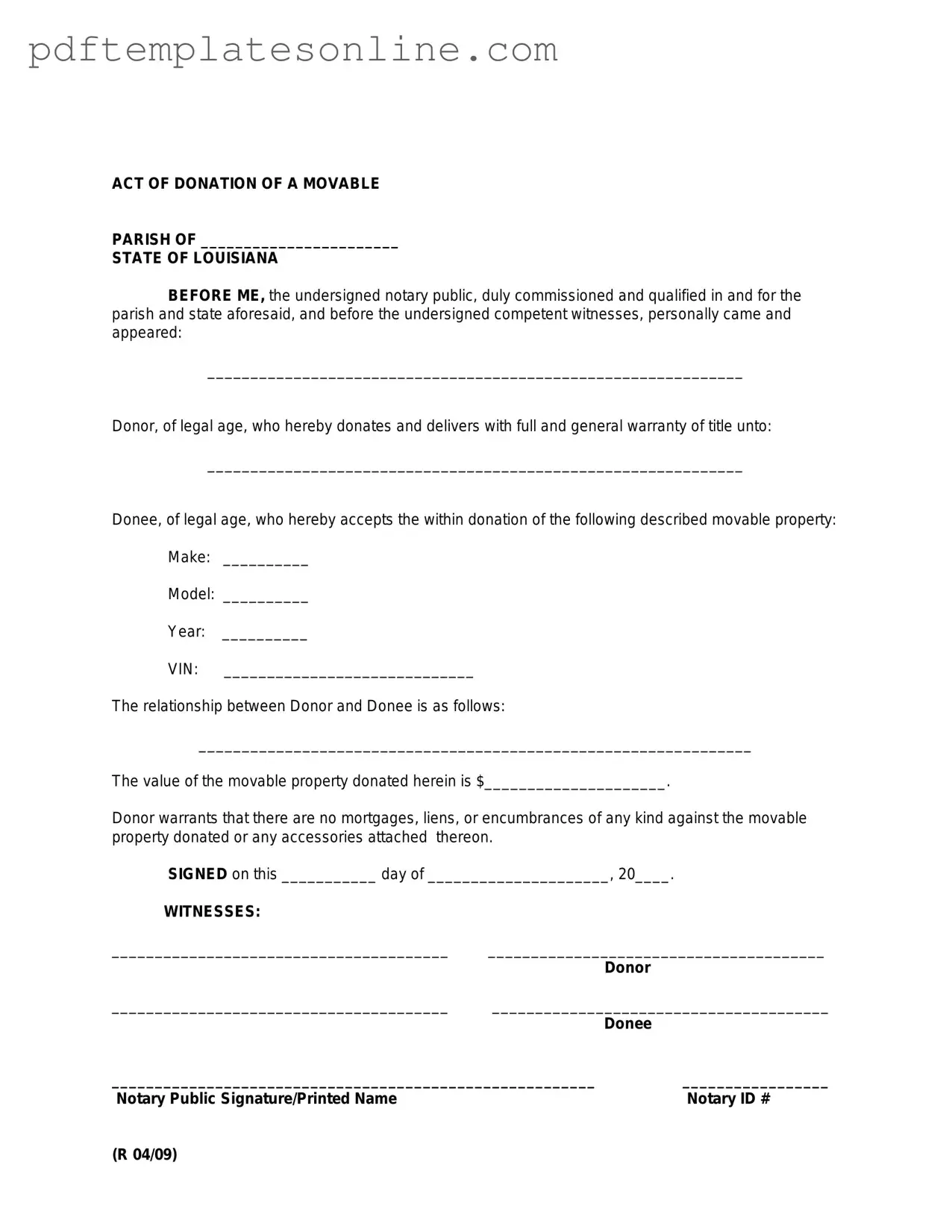Filling out the Louisiana Act of Donation form can seem straightforward, but many individuals make common mistakes that can lead to complications down the line. One frequent error is not providing complete information about the donor and the recipient. It’s essential to include full names, addresses, and other identifying details. Omitting even one piece of information can create confusion and potentially invalidate the donation.
Another mistake involves failing to properly describe the property being donated. The form requires a clear and accurate description of the property, whether it’s real estate, personal belongings, or financial assets. Vague descriptions can lead to disputes or misunderstandings about what is being donated.
Many people also overlook the importance of signatures. Both the donor and the recipient must sign the form for it to be legally binding. If either party forgets to sign, the donation may not be recognized, which can be frustrating for everyone involved.
In addition, some individuals neglect to have the form notarized. While notarization is not always mandatory, it adds an extra layer of authenticity and can help prevent future legal challenges. Skipping this step can leave the donation vulnerable to disputes.
Another common error is not understanding the implications of the donation. Donors should be aware of any tax consequences or liabilities that may arise from their gift. Failing to consider these factors can lead to unexpected financial burdens later on.
People sometimes also forget to check for any specific requirements that may apply to certain types of property. For example, real estate donations may require additional documentation or disclosures. Ignoring these requirements can complicate the donation process.
Additionally, some individuals make the mistake of not keeping a copy of the completed form. It’s crucial to retain a copy for personal records and future reference. Without this documentation, tracking the donation or resolving any issues that arise can become much more difficult.
Lastly, many individuals rush through the process without thoroughly reviewing the completed form. Taking the time to double-check all entries can help catch errors before they become problems. A careful review can save time, money, and stress in the long run.
